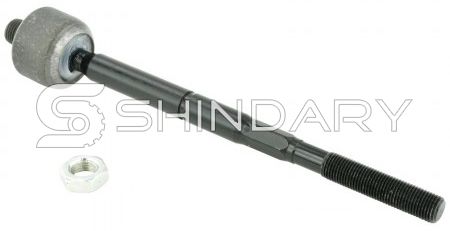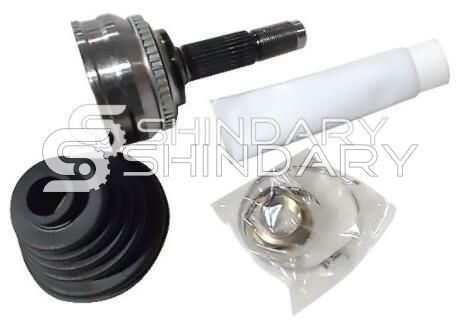Copyright © Shindary Automotive Parts Co., Ltd. All Rights Reserved
Tie rods are important linkages in your vehicle's steering system. When you turn the steering wheel, it operates the steering rack, which pushes and pulls these tie rods. They, in turn, push and pull the wheels, controlling the direction of the vehicle. These important parts can wear out - especially if the protective covers that cover them are torn or ripped. Find out the important signs that your car needs new tie rods below. When you find yourself in need of this service, you'll get the best customer service and the highest quality parts at Shindary!

tie rod
Cross tie rods are key components of a car's steering system that fit the wheels to the steering rack so that they can turn safely. They consist of two main parts: the inner cross tie rod that attaches to the steering rack, and the outer cross tie rod or cross tie rod end that attaches to the steering knuckle on the front wheels. The tie rods are adjustable, so you can adjust your alignment. At the tie rod end is a moveable joint that rotates as you turn the vehicle.
Tie rods are considered wear parts, which means they will eventually wear out and need to be replaced. However, they are designed for modern cars and you may never need to replace tie rods on your vehicle. What may cause them to deteriorate more quickly are rough roads and bad weather. If your vehicle faces harsher conditions, you're more likely to need to replace the tie rods on your vehicle at some point.
Instead, just have them inspected occasionally by Shindary's expert technicians! That's why Shindary recommends having your vehicle's steering and suspension system inspected by a certified dealership professional every 15,000 miles.
If your car is poorly aligned, you may need to adjust or simply replace the tie rods. Poor alignment can lead to rapid wear on one side of the tire, poor handling, and a feeling that the car is "pulling" to one side even when the steering wheel is at a dead stop. You may also hear a squealing or clanking sound from underneath the car while driving, especially when you are turning or shifting gears. Loose tie rods create too much clearance and can move inside the joint, creating a clicking or squeaking sound. And, if your tie rods fail completely, the wheel will no longer be connected to the steering rack at all! It will then simply hang on to the suspension and the car will become unsafe to drive.

CV Joint Kit
There are similar joints in the vehicle's suspension system, called ball joints. Ball joints connect the vehicle's suspension to the control arms that are attached to the wheels. They are also protected by a rubber boot, but as the boot degrades, they can begin to deteriorate. This means they can also squeak, pull tight or click just like a tie rod. CV axles are responsible for transferring power from the engine to the wheels, and if the CV axle joints are damaged, they too can click and rattle as you drive, especially when cornering or going over bumps. Since it's difficult for the average driver to diagnose this problem just by listening, please visit Shindary and have one of our technicians take a close look under your vehicle to identify the problem and fix it correctly!
Previous: SPARE PARTS NUMBERS FOR BRAKING SYSTEM
Shindary Automotive Parts Co., Ltd.